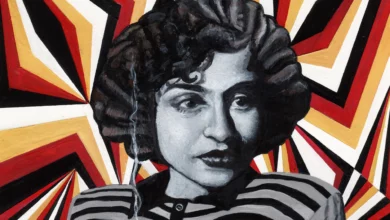
LUXOR — In 1910, French novelist Pierre Loti wrote of the Winter Palace Hotel in Luxor: “The thing that dominates the whole town, and may be seen five or six miles away, is the Winter Palace, a hasty modern production which has grown on the border of the Nile over the last year… Twice or three times as high as the Pharaonic temple, its impudent façade rises there, painted a dirty yellow. One such thing, it will readily be understood, is sufficient to disfigure pitiably the whole of the surroundings. The old Arab town, with its little white houses, its minarets and its palm trees, might as well not exist.”
The Winter Palace, actually built in 1886 and not quite as tall as Loti suggests, now seems very grand in a Victorian way. Sofitel-run, but state-owned, it is expensive and luxurious. It is on the Nile and boasts breathtaking views of feluccas, palm trees and the changing colors of the Theban hills beyond. The staff are extremely friendly and the garden is full of trees, some very old and rare. Designed specifically for rich tourists at the tail end of the Khedive Ismail-inspired trend of building palace hotels, it is where Howard Carter was staying when he participated in the discovery of Tutankhamun’s tomb, and King Farouk’s permanent suite there still contains his furniture.
Although a lot has changed for Luxor since Loti’s visit, there is still the same anxiety about the effects of tourism on the city. Since colonial times, tourists have only increased in number, along with the amount of money they spend, and the efforts of those trying to get hold of that money.
Bohemian-born Rudolf Lehnert and German Ernst Landrock ran a photography business during the early 20th century catering to tourists’ lower and higher tastes, featuring both Orientalist erotica and pictures of Pharaonic temples. While the former are now embarrassing, the latter are clear, informative and well-lit and composed, and as such have become useful historical documents and attractive souvenirs.
In an exhibition entitled “From Past to Present” in the Winter Palace Hotel’s lobby, Lehnert’s photographs are paired with a contemporary version of the cultural souvenir: German artist and architect Mathias Buss’s colorful pastels. They are ostensibly of the same subjects as the photographs — Pharaonic ruins in Luxor and the surrounding area – but their main selling point is their pretty, soft color gradations.
The pastels, shown earlier this year at the Swiss Club in Cairo, are best when they are small and abstract, Turneresque light studies and nothing more. One Paul Thek-like piece is an attempt at something different: the powder of the pastels competes with the Arabic of a local newspaper, which the artist has used instead of paper. It is the only touch of contemporaneity in the exhibition, and indeed one of only a few allowed to intrude into the hotel itself. Buss’s works are on sale for up to 920 euros through the hotel management, alongside Lehnert’s prints. The exhibition cannot be thought of separately from the hotel. The works are positioned on easels in a hallway that leads to bars and restaurants, between permanent vitrines displaying examples of earlier hotel tableware and uniforms among old photos of nameless rich people holidaying at the hotel.
The exhibition is a collaboration between the Lehnert & Landrock store and the hotel’s German manager, Christian Ruge, who talks about the Sofitel’s love of culture “in the French tradition.”
Ruge says he would like to make such exhibitions a regular thing but, “It’s not easy to get artists to come to Luxor.” Perhaps it could be easier if the focus were on living Egyptian artists, rather than Europeans, but this may be a possibility in the future as it seems that Ruge is open to suggestions.
On the opening night, Edouard Lambelet, the septuagenarian step-grandson of Landrock and current owner of the Lehnert & Landrock store, gave a slideshow of Lehnert’s photography — omitting the erotica — in the hotel’s “Victorian Lounge.” It was an old-fashioned, nostalgic talk full of wonderment about “the good old days when Egypt was flooded” every year. Wine and hors d’oeuvres were served and the event was well attended by hotel guests, as well as the Luxor-based consuls of various European countries.
Also in attendance was Luxor’s governor, Ezzat Saad, a former ambassador who was appointed in August after popular protests against Samir Farag, the mastermind of the controversial “Luxor Development Plan,” which in the process of turning the city into the “world’s largest open air museum” has been destroying its more recent history, forcibly evicting its citizens, and deliberately creating “buffer zones” between locals and Pharaonic relics.
“The people here are totally dependent on tourism, which is not a good thing,” Saad told Egypt Independent. “The economy of this governorate needs to be diversified.”
He seemed grateful for the exhibition and the high turnout, however, especially as Luxor is still suffering dramatically from the tourism recession that followed the January revolution.
Saad mentioned two more cultural events that Luxor will be hosting next year: the Luxor African Film Festival in February, and the European Egyptian Film Festival in late September.
The current show does not attempt to engage with contemporary events, instead celebrating the past in the hotel’s own colonial “buffer zone.” This luxurious bubble helps Luxor attract the rich tourists that it needs for its economy, at the expense of the development of the city’s current cultural potential. Hopefully, the upcoming film festivals will contribute something toward the latter.




